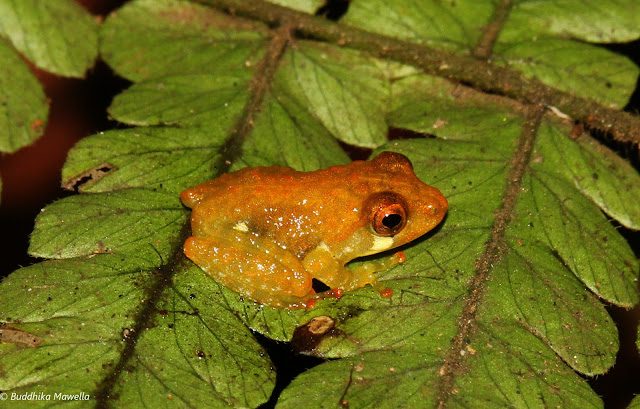 |
| Juvenile |
English: Cheeky shrub frog
Binomial: Philautus procax
Sinhala: කම්මුලේ පැල්ලමැති පඳුරු මැඩියා[Kammule pallamathi panduru madiya]
Philautus procax is an endemic species of shrub frogs found in Sri Lankan highlands. The known population of this frog is restricted to the Rakwana Hills of the Eastern Sinharaja. Bearing a white patch between lower margin of the eye and the upper lip is a distinctive character which is the easiest identification method from other amphibians found in the same region. In the described research paper (Manamendra-Arachchi and Pethiyagoda 2005), they have mentioned that the holotype of the species was found in the elevation of 1060m at Morningside Forest Reserve. Above photographed ones were also found in Sooriyakanda area where the elevation is about 1080m above the sea level. Observed place was a closed-canopy cloud forest and there was a small water stream close to the perched shrubs. It is ‘Critically Endangered’ In the IUCN Red List and any activity that changes the environmental conditions of cloud forests might be a threat for the species.
- Manamendra-Arachchi, K., and Pethiyagoda, R. (2005). ''The Sri Lankan shrub-frogs of the genus Philautus Gistel, 1848 (Ranidae: Rhacophorinae), with description of 27 new species.'' Raffles Bulletin of Zoology, Supplement 12, 163-303.
- The IUCN Red List of Threatened Species(tm) 2015-4 - http://www.iucnredlist.org
- Manamendra-Arachchi, K. & R. Pethiyagoda (2006): Sri Lankan amphibians [in Sinhala]. – WHT Publications, Colombo.









